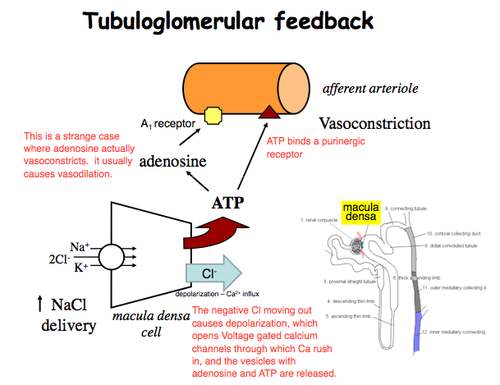- Joined
- Jan 31, 2012
- Messages
- 2,672
- Reaction score
- 824
FA is telling me that the macula densa senses NaCl at the DCT and reacts accordingly by adjusting the release of renin, affecting RAAS, and affecting ATII action at the efferent arteriole.
Costanzo says something different in that the macula densa senses NaCl at the DCT and then releases some kind of effector to the afferent arteriole to cause vasoconstriction, completely different from what FA says.
I'm not quite sure which one to believe, but FA is somewhat sketchy in that it has a lot of errors (this was not found in the errata list).
Costanzo says something different in that the macula densa senses NaCl at the DCT and then releases some kind of effector to the afferent arteriole to cause vasoconstriction, completely different from what FA says.
I'm not quite sure which one to believe, but FA is somewhat sketchy in that it has a lot of errors (this was not found in the errata list).

